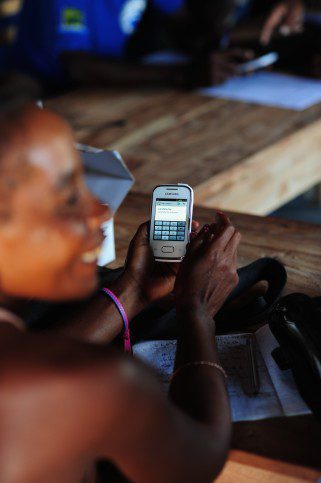By Parson Rambinizandry (Velondriake Safidy Programme Coordinator) & Marie Williamson (Safidy Medical Officer)
Risy looks across at her client, asking the young woman a standard set of questions to be able to safely give her the contraceptive pills she wishes to use. At every answer she looks back at her phone and taps the screen; “Eka” for “yes”, “Tsia” for “no”. Once the checklist is complete she clicks “Next”, and the subsequent message confirms that this young woman is eligible to use contraceptive pills (as she’s not currently breastfeeding, has no history of blood clots, etc). After going through another standard set of questions to make sure there’s no chance that her client could already be pregnant, fingers moving adeptly to scroll down the list, Risy’s prompted to give her instructions about how to take the pills (what to do if you miss a day, potential side effects to look out for, etc). Finally, she records the number of pill packs that her client’s taking, offers her condoms as well (for protection against HIV and STIs), and notes the date of the follow up appointment that they schedule together. She clicks “Save”, and uploads the completed form to our secure Safidy server…
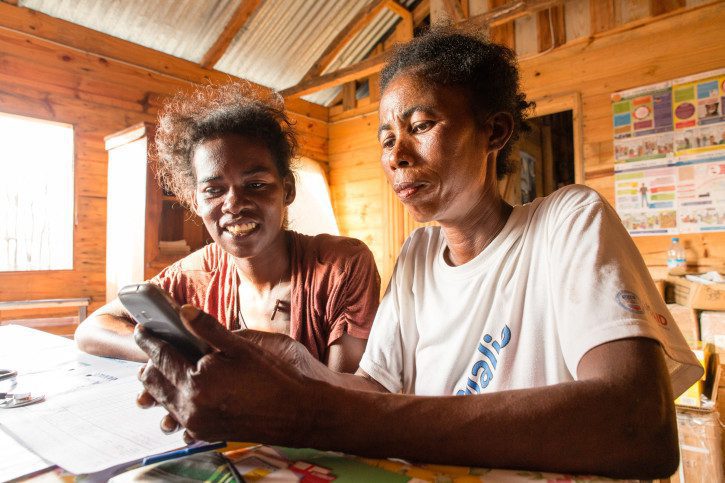
Photo © Garth Cripps.
This is the exciting result of our efforts over the past year to train and support community health workers in Velondriake to use smart phones for their service delivery and reporting!
The aim of this new mHealth initiative within our Safidy programme is two-fold…
Firstly, it’s about improving quality assurance; making sure that hormonal contraceptives are distributed as safely as possible, by providing checklists and constraints to community health workers according to clinical guidelines. They already have these detailed in a paper manual, but embedding them within a smart phone form (custom designed by our team using Open Data Kit or ODK) makes them easier to follow, with contraceptive options filtered according to answers given in response to certain checklists.
Secondly, it’s about improving monitoring; allowing service delivery data (e.g. the number and type of contraceptives distributed) to be transmitted in near real-time from remote villages, giving us quicker access to this information to feedback to the community health workers and report to the Ministry of Health. It has the potential to eliminate the resource-intensive task of travelling to each village to collect paper reports each month, then manually entering the data into Excel for analysis and review (which results in a considerable time-lag).
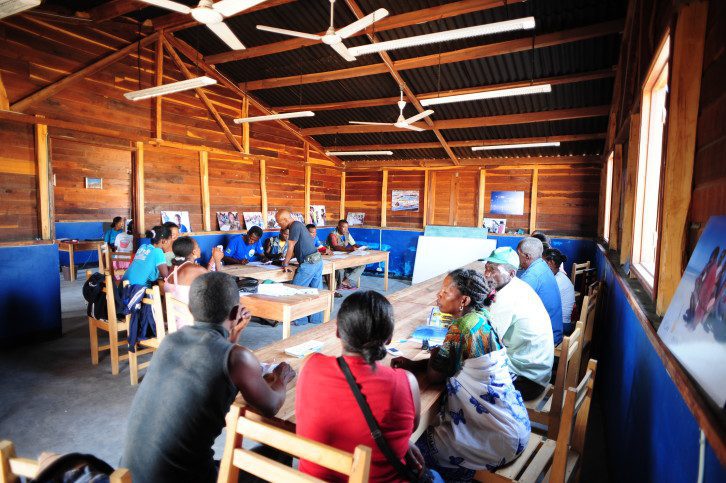
Photo © Olivia Kemp.
We started the pilot last year, initially training our four community health worker supervisors from the village of Andavadoaka to use smart phones. The workshop was held jointly with community-based data collectors responsible for monitoring the local shark fishery, so they were able to share their skills and experiences! After numerous iterations of the ODK form (which started out life as an extremely complex 789-line beast and eventually got slimmed down to a more manageable 155-lines), we gave our four community health worker supervisors more training in February and then they started using smart phones during their consultations (alongside their standard paper reports, which they’ll continue to use so that we can cross-check for accuracy until we’re fully confident in this new method).
Photo © Olivia Kemp.
“ODK is a good thing; once the community health workers have become used to the app, it will be easier than using paper reports to collect and transfer data.” – Balbine Perevizy, Community Health Worker Supervisor, Andavadoaka
We expanded the pilot in April this year, training an additional 21 community health workers from throughout our Velondriake service area to use smart phones and the ODK form. Before the training, only one out of the 21 had used a smart phone before, since she already also works as a community-based monitor collecting shark fishery data. Only three had heard of using smart phones for data collection, and only two had heard of the internet. Needless to say, they all faced a fairly steep learning curve, but generally approached this opportunity with curiosity and excitement!
The training workshop lasted three days. The first day covered the basic use of smart phones: turning phones on and off, writing text messages, making and receiving phone calls, and putting credit on phones. The following day, they practiced completing the ODK form to enter sample client data. The community health worker supervisors facilitated these sessions in small groups, and demonstrated how to do a consultation using a smart phone through role-plays. The final day covered how to edit forms, and an overview of how to upload data to our Safidy server.
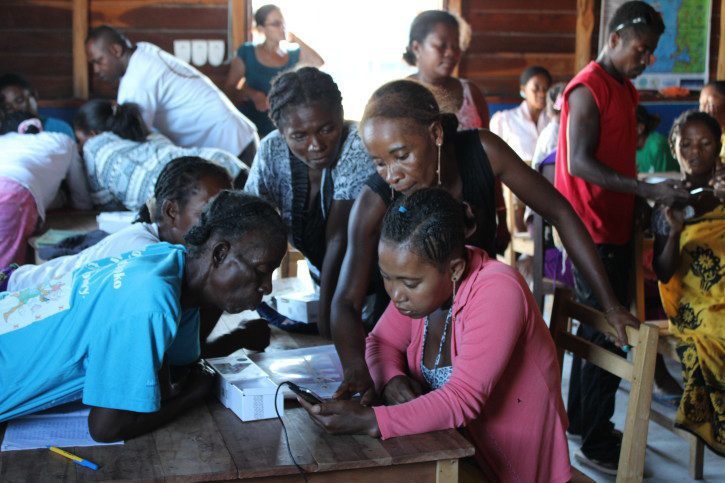
Photo © Emma Wright.
“As most of the community health workers had never seen or heard of smart phones before the initial training workshop, many were quite wary of using the phones themselves at first and needed one-to-one support from those with more experience.” – Balbine Perevizy, Community Health Worker Supervisor, Andavadoaka
We’re now in an extended pilot phase, trialling the use of smart phones by 25 community health workers (including the four supervisors)! A refresher training workshop was held in May, with lots of small group work and role-plays facilitated by our now experienced community health worker supervisors, and practices of uploading the completed ODK form to our Safidy server. The first day included again the community-based data collectors responsible for monitoring the local shark fishery, which provided an excellent opportunity for community health workers to exchange their experiences and deepen their collective understanding of the links between their different work areas. We’ve got another review training session planned in August, during which the community health workers will self-assess their progress so that we can tailor our follow up support according to their abilities.
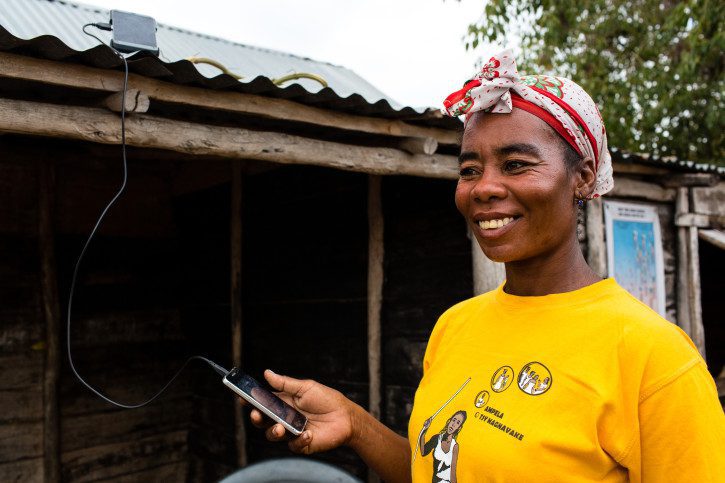
Photo © Garth Cripps.
In the meantime, we’ve been addressing various practical challenges. Many community health workers weren’t able to find a reliable supply of electricity to charge their smart phones without travelling to a nearby village or paying a small fee, so they’ve now all been supplied with a WakaWaka solar charger. This also incorporates a small LED light alongside the smart phone charging point; a useful bonus for them and their families!
Another challenge is timely data retrieval from villages with weak or no internet access; although network availability and strength has increased in this region in recent months thanks to the expansion of the Orange network along the coastline, there’s still insufficient connectivity to upload data from some remote villages. Possible solutions that we’re exploring include the community health workers in these villages travelling to a nearby point with better connectivity in order to upload their ODK forms from there (as forms can be saved on the phone and uploaded later if needed), and/or potentially incorporating an SMS-based reporting function into our ODK system with technical support from Medic Mobile.
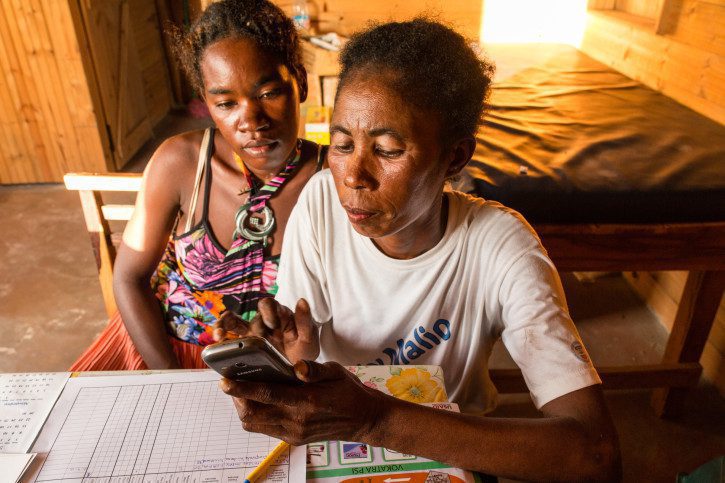
Photo © Garth Cripps.
In the meantime, we’re excited to announce that over 175 completed ODK forms have been uploaded successfully to our Safidy server to date, and several of these have been cross-checked for accuracy with the corresponding paper forms; in general they’ve been found to be as accurate or more accurate, so great news for smarter service delivery and reporting!
With thanks to CHASE Africa for their valuable support for this initiative. Our community health programme in Velondriake is also supported by the MacArthur Foundation and Helmsley Charitable Trust.


